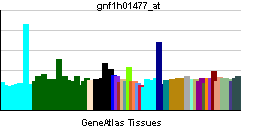ECT2
Jump to navigation
Jump to search
| Epithelial cell transforming sequence 2 oncogene | |||||||||||||
|---|---|---|---|---|---|---|---|---|---|---|---|---|---|
 PDB rendering based on 2cou. | |||||||||||||
| |||||||||||||
| Identifiers | |||||||||||||
| Symbols | ECT2 ; FLJ10461; MGC138291 | ||||||||||||
| External IDs | Template:OMIM5 Template:MGI HomoloGene: 7298 | ||||||||||||
| |||||||||||||
| RNA expression pattern | |||||||||||||
 | |||||||||||||
 | |||||||||||||
 | |||||||||||||
| More reference expression data | |||||||||||||
| Orthologs | |||||||||||||
| Template:GNF Ortholog box | |||||||||||||
| Species | Human | Mouse | |||||||||||
| Entrez | n/a | n/a | |||||||||||
| Ensembl | n/a | n/a | |||||||||||
| UniProt | n/a | n/a | |||||||||||
| RefSeq (mRNA) | n/a | n/a | |||||||||||
| RefSeq (protein) | n/a | n/a | |||||||||||
| Location (UCSC) | n/a | n/a | |||||||||||
| PubMed search | n/a | n/a | |||||||||||
Epithelial cell transforming sequence 2 oncogene, also known as ECT2, is a human gene.[1]
The protein encoded by this gene is a transforming protein that is related to Rho-specific exchange factors and yeast cell cycle regulators. The expression of this gene is elevated with the onset of DNA synthesis and remains elevated during G2 and M phases. In situ hybridization analysis showed that expression is at a high level in cells undergoing mitosis in regenerating liver. Thus, this protein is expressed in a cell cycle-dependent manner during liver regeneration, and is thought to have an important role in the regulation of cytokinesis.[1]
References
Further reading
- Takai S, Long JE, Yamada K, Miki T (1995). "Chromosomal localization of the human ECT2 proto-oncogene to 3q26.1-->q26.2 by somatic cell analysis and fluorescence in situ hybridization". Genomics. 27 (1): 220–2. doi:10.1006/geno.1995.1033. PMID 7665179.
- Miki T, Smith CL, Long JE; et al. (1993). "Oncogene ect2 is related to regulators of small GTP-binding proteins". Nature. 362 (6419): 462–5. doi:10.1038/362462a0. PMID 8464478.
- Hillier LD, Lennon G, Becker M; et al. (1997). "Generation and analysis of 280,000 human expressed sequence tags". Genome Res. 6 (9): 807–28. PMID 8889549.
- Tatsumoto T, Xie X, Blumenthal R; et al. (1999). "Human ECT2 is an exchange factor for Rho GTPases, phosphorylated in G2/M phases, and involved in cytokinesis". J. Cell Biol. 147 (5): 921–8. PMID 10579713.
- Kimura K, Tsuji T, Takada Y; et al. (2000). "Accumulation of GTP-bound RhoA during cytokinesis and a critical role of ECT2 in this accumulation". J. Biol. Chem. 275 (23): 17233–6. doi:10.1074/jbc.C000212200. PMID 10837491.
- Wennerberg K, Ellerbroek SM, Liu RY; et al. (2003). "RhoG signals in parallel with Rac1 and Cdc42". J. Biol. Chem. 277 (49): 47810–7. doi:10.1074/jbc.M203816200. PMID 12376551.
- Strausberg RL, Feingold EA, Grouse LH; et al. (2003). "Generation and initial analysis of more than 15,000 full-length human and mouse cDNA sequences". Proc. Natl. Acad. Sci. U.S.A. 99 (26): 16899–903. doi:10.1073/pnas.242603899. PMID 12477932.
- Matsuda A, Suzuki Y, Honda G; et al. (2003). "Large-scale identification and characterization of human genes that activate NF-kappaB and MAPK signaling pathways". Oncogene. 22 (21): 3307–18. doi:10.1038/sj.onc.1206406. PMID 12761501.
- Saito S, Tatsumoto T, Lorenzi MV; et al. (2004). "Rho exchange factor ECT2 is induced by growth factors and regulates cytokinesis through the N-terminal cell cycle regulator-related domains". J. Cell. Biochem. 90 (4): 819–36. doi:10.1002/jcb.10688. PMID 14587037.
- Hara T, Ishida H, Raziuddin R; et al. (2004). "Novel kelch-like protein, KLEIP, is involved in actin assembly at cell-cell contact sites of Madin-Darby canine kidney cells". Mol. Biol. Cell. 15 (3): 1172–84. doi:10.1091/mbc.E03-07-0531. PMID 14668487.
- Ota T, Suzuki Y, Nishikawa T; et al. (2004). "Complete sequencing and characterization of 21,243 full-length human cDNAs". Nat. Genet. 36 (1): 40–5. doi:10.1038/ng1285. PMID 14702039.
- Liu XF, Ishida H, Raziuddin R, Miki T (2004). "Nucleotide exchange factor ECT2 interacts with the polarity protein complex Par6/Par3/protein kinase Czeta (PKCzeta) and regulates PKCzeta activity". Mol. Cell. Biol. 24 (15): 6665–75. doi:10.1128/MCB.24.15.6665-6675.2004. PMID 15254234.
- Kim JE, Billadeau DD, Chen J (2005). "The tandem BRCT domains of Ect2 are required for both negative and positive regulation of Ect2 in cytokinesis". J. Biol. Chem. 280 (7): 5733–9. doi:10.1074/jbc.M409298200. PMID 15545273.
- Oceguera-Yanez F, Kimura K, Yasuda S; et al. (2005). "Ect2 and MgcRacGAP regulate the activation and function of Cdc42 in mitosis". J. Cell Biol. 168 (2): 221–32. doi:10.1083/jcb.200408085. PMID 15642749.
- Yüce O, Piekny A, Glotzer M (2007). "An ECT2-centralspindlin complex regulates the localization and function of RhoA". J. Cell Biol. 170 (4): 571–82. doi:10.1083/jcb.200501097. PMID 16103226.
- Niiya F, Xie X, Lee KS; et al. (2006). "Inhibition of cyclin-dependent kinase 1 induces cytokinesis without chromosome segregation in an ECT2 and MgcRacGAP-dependent manner". J. Biol. Chem. 280 (43): 36502–9. doi:10.1074/jbc.M508007200. PMID 16118207.
- Zhao WM, Fang G (2005). "MgcRacGAP controls the assembly of the contractile ring and the initiation of cytokinesis". Proc. Natl. Acad. Sci. U.S.A. 102 (37): 13158–63. doi:10.1073/pnas.0504145102. PMID 16129829.
- Hara T, Abe M, Inoue H; et al. (2006). "Cytokinesis regulator ECT2 changes its conformation through phosphorylation at Thr-341 in G2/M phase". Oncogene. 25 (4): 566–78. doi:10.1038/sj.onc.1209078. PMID 16170345.
- Niiya F, Tatsumoto T, Lee KS, Miki T (2006). "Phosphorylation of the cytokinesis regulator ECT2 at G2/M phase stimulates association of the mitotic kinase Plk1 and accumulation of GTP-bound RhoA". Oncogene. 25 (6): 827–37. doi:10.1038/sj.onc.1209124. PMID 16247472.
- Nishimura Y, Yonemura S (2006). "Centralspindlin regulates ECT2 and RhoA accumulation at the equatorial cortex during cytokinesis". J. Cell. Sci. 119 (Pt 1): 104–14. doi:10.1242/jcs.02737. PMID 16352658.
| This protein-related article is a stub. You can help Wikipedia by expanding it. |